Lithic Scatter on the Great Sage Plains of the Southwest
Hiking and coming across lithic scatter - leavings from the workings of stone tools
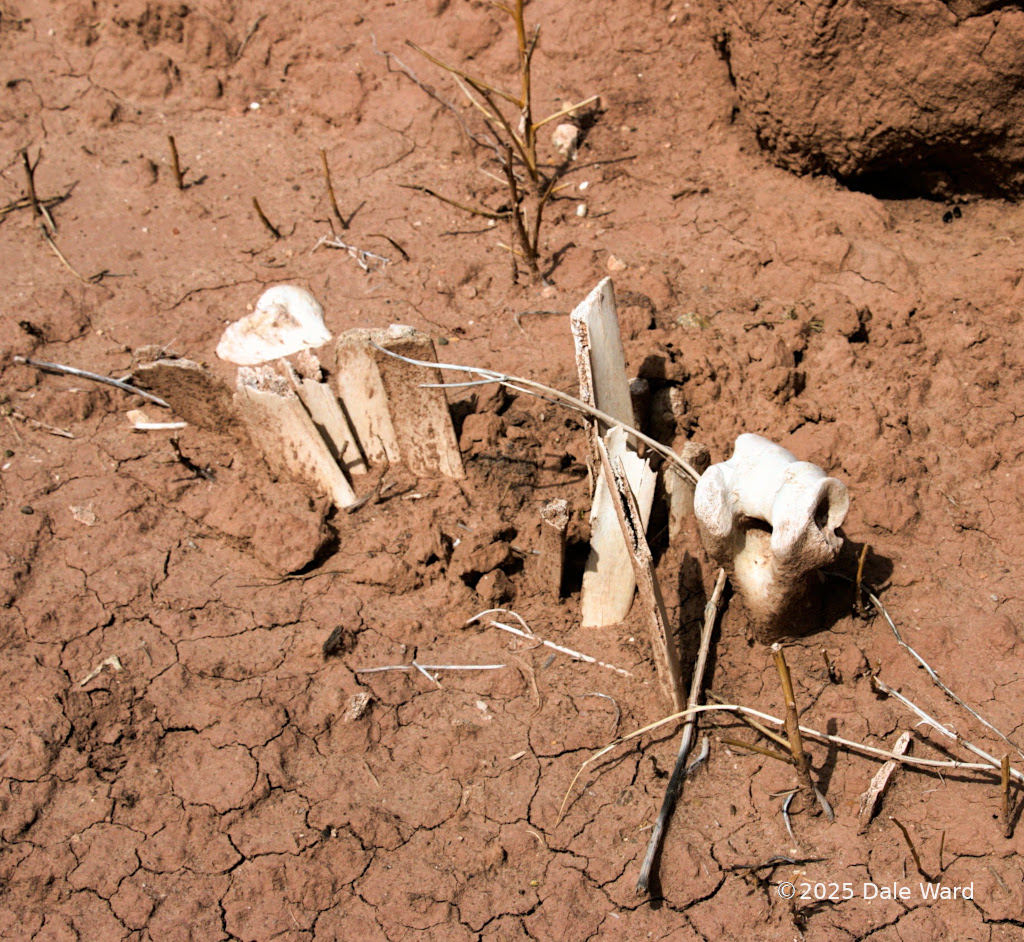 Bones in the bottom of the arroyo. I found a stone cutting tool near these.
Bones in the bottom of the arroyo. I found a stone cutting tool near these.
Here’s a neat little mystery adventure that I had a couple of weeks ago.
I was hiking up a narrow arroyo in Southeastern Utah. It was perhaps 15 feet wide and eight feet deep, with dry silt/clay walls and bottom. I came across a pile of bones embedded in the dried mud at the bottom of the wash. Wouldn’t be remarkable in and of itself - perhaps deer died upstream and washed down, and its bones were partially buried.
The odd thing was that the bones were all in a clump…and there was a stone cutting blade on the ground within a four or five feet of the bones.
Hm, I said. That’s odd.
I looked up the arroyo wall, to a little bit above my eye level. There were a couple of bones embedded in the dirt.
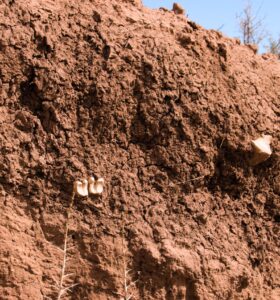 Bones eroding out of the arroyo embankment. There are two groups - the pair of bones on the left, and another bone near the right edge of the photo.
Bones eroding out of the arroyo embankment. There are two groups - the pair of bones on the left, and another bone near the right edge of the photo.
There was a pair of bones, next to each other, and another bone a couple of feet away from them.
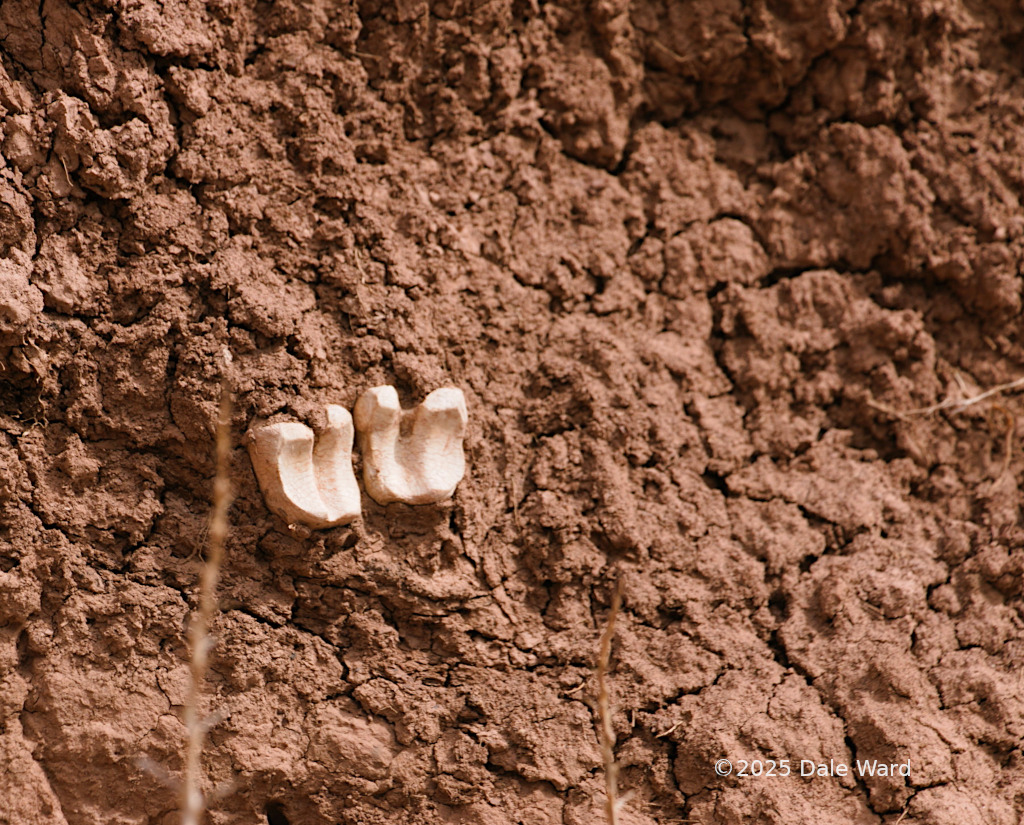 Close-up of bones eroding out of the arroyo embankment.
Close-up of bones eroding out of the arroyo embankment.
The solitary bone was embedded into the wall, and the paired bones were slightly impressed into the wall, but were mostly sitting on the wall. Note that this was well above the bottom of the arroyo. It was one or two feet from the top of the arroyo, and maybe six feet above the bones at the arroyo bottom.
Were the bones in the bottom of the arroyo originally with this other bone location? Was the cutting tool associated with the bones, or just a coincidence?
I climbed up out of the arroyo, to a low, rounded ridge of rock and earth. I wanted to see if there was anything up there that might explain what I’d seen.
On the rise above the arroyo, there was an area of lithic scatter. These are archaeological sites where people gathered at some time in the past, leaving numerous fragments of stone lying on the ground.
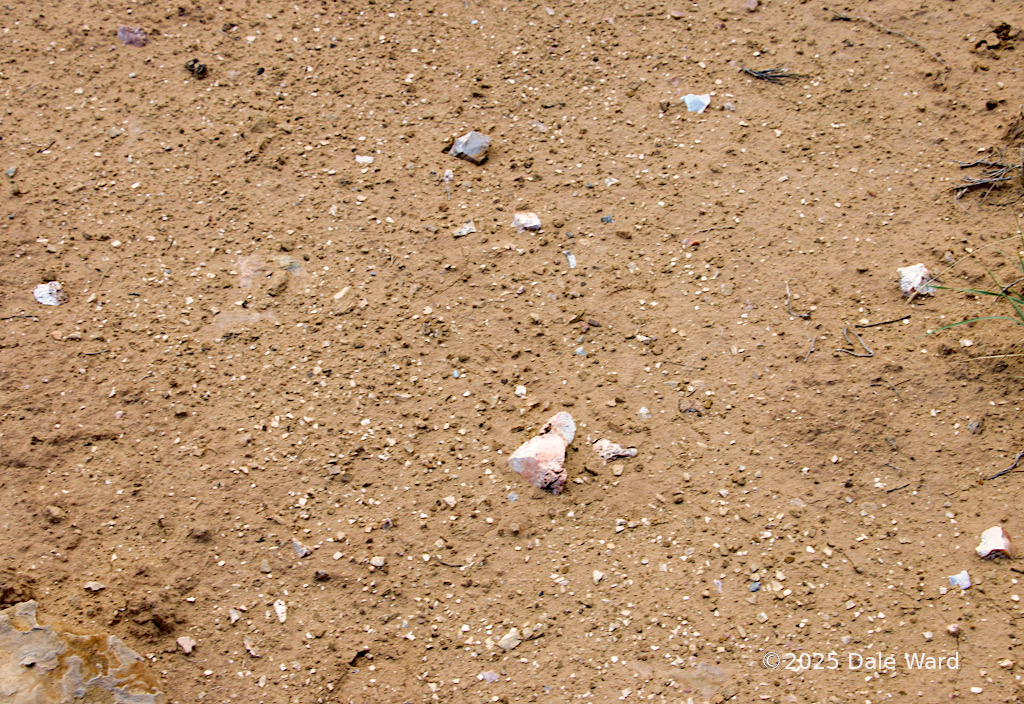 Lithic scatter on the rounded rise above the arroyo. You cans see some cutters and lithic fragments scattered about.
Lithic scatter on the rounded rise above the arroyo. You cans see some cutters and lithic fragments scattered about.
There were stone tools scattered around on the ground, as well as fragments of stone tools.
I picked up and held a couple of the cutters. They were made out of stone that was unlike other stones in the area.
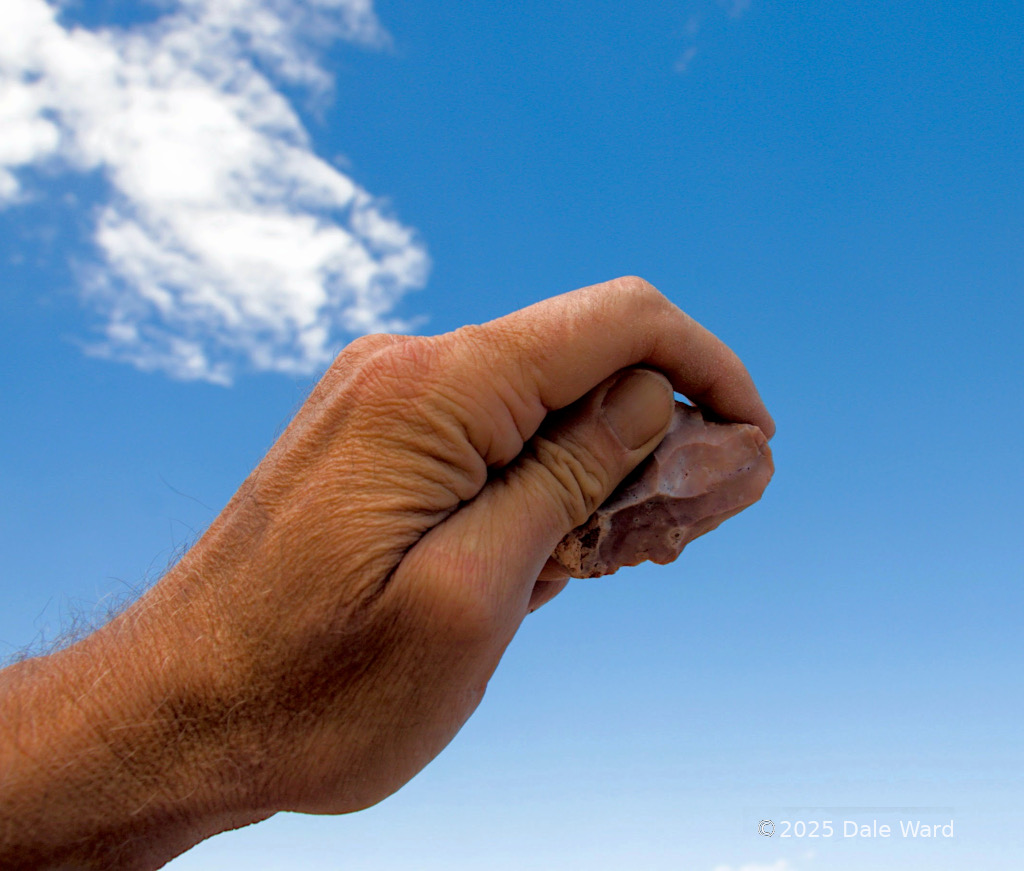 Cutting tool, held in my hand. It was a very natural fit, it felt good to hold it.
Cutting tool, held in my hand. It was a very natural fit, it felt good to hold it.
Oh my. What if those bones were associated with this lithic site.
Perhaps people had dwellings, something temporary like wikiups, on the ridge, and they would make tools and perhaps butcher animals on this end of the ridge? That might explain why some of the bones were embedded into the arroyo wall. After all, if they had washed downstream, they would likely have only been in the bottom of the arroyo.
Oh, this was very cool. As is usually the case, I was inordinately pleased with my wild conjectures. I’m kind of self-reinforcing in that regard.
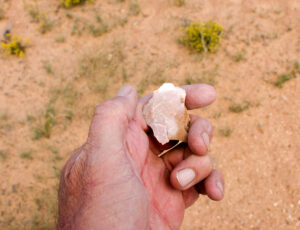 Another cutting tool in my hand.
Another cutting tool in my hand.
I sat holding one of the cutters in my hand admiring its sharp edge, and how naturally it seemed to fit me. I felt the sun on my head and the breeze.
It was marvelous just to sit there and imagine what might have been.
Then it was time to be on my way. I left the bones undisturbed and put the stone cutters back as I’d found them. It’s illegal to dig archeological artifacts on Federal lands. More than that, it’s also immoral. Who am I to rob some one else of the privilege of finding this?
I continued hiking up the arroyo, grinning even more than usual.
A postscript:
Here in Cortez, Colorado, we are very fortunate to have The Crow Canyon Archeological Center. It’s a fabulous place - they have a lecture series, give classes, perform research…it is really quite a resource.
I sent copies of my photos to Dr. Dombrosky at Crow Canyon to find out what he thought about my observations.
I was over-the-moon pleased to get Dr. Dombrosky’s response. I’m continually impressed with how generous folks are with their time and expertise.
Here’s a section of his reply:
It looks to me like there is a lithic scatter there and you found bones of an artiodactyl (even-toed hoofed animal) of some kind. It’s hard to tell if it’s deer-sized or cow-sized without a scale. That one picture, where you second guessed yourself, is essentially looking down at the top of two toes. However, these bones look rather recent to me. They’re bleached a rather bright white from the sun and are still visible on the surface. Animal remains found in arroyo contexts like that are very hard to tie to artifacts. Arroyos are dynamic and complex environments where bones can move around (getting lodged, dislodged, and deposited) in all different kinds of ways.
So my suppositions about a kill site and its association with the lithic site are, at best, a stretch. The bones look recent, and arroyos tend to move things around a lot.
But! I still had a wonderful time thinking about all of this stuff.